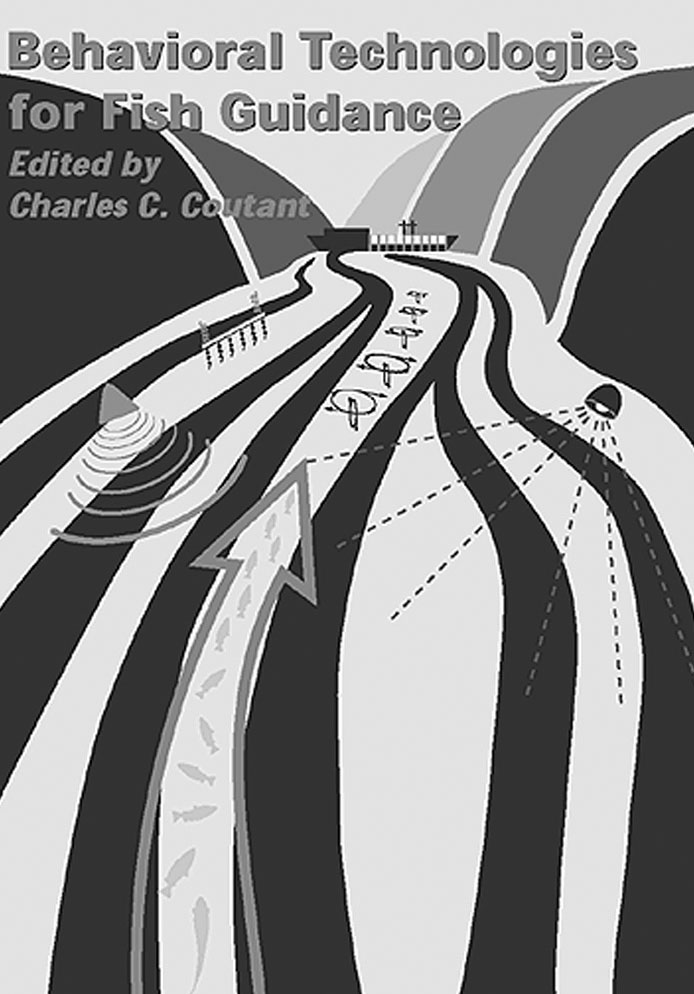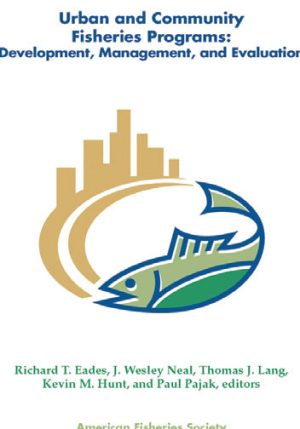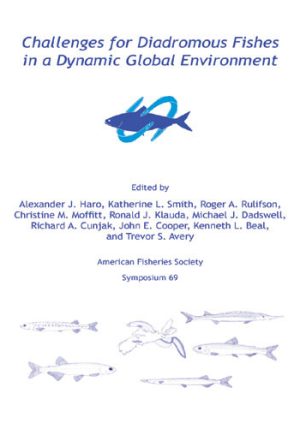Behavioral Technologies for Fish Guidance
$69.00
Description
Charles C. Coutant, editor
203 pages
Published by American Fisheries Society, August 2001
Summary
Symposium 26
Behavioral Technologies for Fish Guidance presents up-to-date information on an important fisheries bioengineering topic. Fish passage management is relevant to fisheries in fish protection systems at hydroelectric power stations, cooling water intakes for steam electric power stations, irrigation water intakes, and similar points of water withdrawal from public waters. There is currently much action on this subject from regulatory and research fronts. This symposium proceedings fills the need for peer-reviewed documentation of the results of recent research and demonstration experiments with several technologies, fish species, and locations. New concepts in fish guidance, as well as guidelines for the development of behavioral guidance technologies and regulatory agency perspectives on the use of these technologies, are also presented. In addition to its technical content, the book includes materials and information currently available only in difficult-to-obtain agency reports.
Highlights include:
* Measurement systems for detecting fish behavior in passage experiments * Regulatory perspectives from FERC and NMFS * Peer-reviewed documentation of the results of recent research, and * demonstration experiments with several technologies, fish species, and locations
This book is intended for:
* Fisheries and bioengineering students * Researchers, regulators, design engineers
Table of Contents
Responses of American Eels to Strobe Light and Sound (Preliminary Data) and Introduction to Sound Conditioning as a Potential Fish Passage Technology P. H. Patrick, J. S. Poulton, and R. Brown
Evaluation of Strobe Lights for Vertically Displacing Juvenile Salmon Near a Filling Culvert Intake at the Hiram M. Chittenden Locks, Seattle, Washington Peter N. Johnson, Frederick A. Goetz, and Gene R. Ploskey
Response of Free-Ranging Kokanee to Strobe Lights Melo A. Maiolie, Bill Harryman, and Bill Ament
Effectiveness of Strobe Lights and an Infrasound Device for Eliciting Avoidance by Juvenile Salmon Gene R. Ploskey and Peter N. Johnson
Turbulent Attraction Flows for Guiding Juvenile Salmonids at Dams Charles C. Coutant
Evaluation of Infrasound and Strobe Lights for Eliciting Avoidance Behavior in Juvenile Salmon and Char Robert P. Mueller, Duane A. Neitzel, and Brett G. Amidan
Evaluation of Low-Frequency Sound Transducers for Guiding Salmon Smolts Away from a Navigation Lock Frederick A. Goetz, James J. Dawson, Travis Shaw, and Jeffrey Dillon
Integrated, Multi-Sensory, Behavioral Guidance Systems for Fish Diversions Charles C. Coutant
Electric Power Research Institute’s (EPRI) Research on Behavioral Technologies Edward P. Taft, Douglas A. Dixon, and Charles W. Sullivan
Reaction of Chinook Salmon, Northern Pikeminnow, and Smallmouth Bass to Behavioral Guidance Stimuli Stephen V. Amaral, Frederick C. Winchell, and Todd N. Pearsons
Biological Evaluation of the Behavioral Guidance Structure at Lower Granite Dam on the Snake River, Washington in 1998 Noah S. Adams, Gary E. Johnson, Dennis W. Rondorf, Steve M. Anglea, and Tim Wik
A New Multibeam Sonar Technique for Evaluating Fine-Scale Fish Behavior near Hydroelectric Dam Guidance Structures Robert L. Johnson, Mary Ann Simmons, Carver S. Simmons, and Susan L. Blanton
Use of Electrical Barriers to Deter Movement of Round Goby Jacqueline F. Savino, David J. Jude, and Melissa J. Kostich
Detection of Infrasound in Fish and Behavioral Responses to Intense Infrasound in Juvenile Salmonids and European Silver Eels: A Minireview Olav Sand, Per S. Enger, Hans Erik Karlsen, and Frank R. Knudsen







